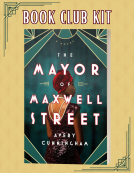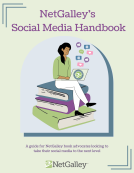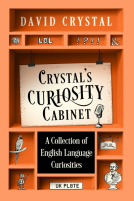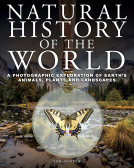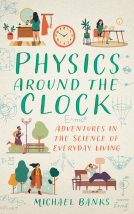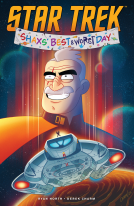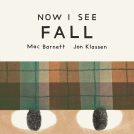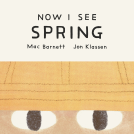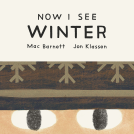
Scientifica Historica
How the world's great science books chart the history of knowledge
by Brian Clegg
This title was previously available on NetGalley and is now archived.
Send NetGalley books directly to your Kindle or Kindle app
1
To read on a Kindle or Kindle app, please add kindle@netgalley.com as an approved email address to receive files in your Amazon account. Click here for step-by-step instructions.
2
Also find your Kindle email address within your Amazon account, and enter it here.
Pub Date 1 Oct 2019 | Archive Date 12 Nov 2019
Quarto Publishing Group - Ivy Press | Ivy Press
Talking about this book? Use #ScientificaHistorica #NetGalley. More hashtag tips!
Description
The book is divided into five eras and explores the leading scientific pioneers, discoveries and books within them:
- Ancient World – looks at the beginnings of language, plus the first ever scientific documents produced and translated
- Renaissance in Print – explores the effects of the invention of the printing press and the exploration of the seas and skies
- Modern Classical – surveys the nineteenth century and the development of science as a profession
- Post-Classical – dissects the twentieth century and the introduction of relativity, quantum theory and genetics
- The Next Generation – reviews the period from 1980 to the modern day, showing how science has become accessible to the general public
From carvings and scrolls to glossy bound tomes, this book beautifully illustrates the evolution of scientific communication to the world. By recounting the history of science via its key works—those books written by the keenest minds our world has known—this book reflects the physical results of brilliant thought manifested in titles that literally changed the course of knowledge.
Marketing Plan
Consumer Marketing: Drive awareness via author’s social media (small, but he’s on Twitter & Facebook) Publicity at science outlets B2C email campaigns via Quarto Knows mailing lists Giveaways at select blogs and websites
Publicity/Media: Target print, blogs, websites covering science & history with a big push for holiday gift guides - Atlas Obscura, Discover, Science, National Geographic, New York Times, Salon, Slate, Huffington Post, Newsweek, Wall Street Journal, Nature, Smithsonian, Economist
Review copy and photo gallery push to science and related outlets: Sciencenews.org, ScientificAmerican.com, Mad Science Innovation, i09.com, Gizmodo.com, Mashable, Popular Science, Popular Mechanics, Sky & Telescope, Discover, Science, Wired.com
Big push to books/collectors/rare books, antique blogs, websites and related media: Book Patrol, Victoria, Fine Books & Collections, Collector’s Weekly, Abe Books, Push to teacher and education media Target for interviews at regional and national public radio shows covering science Target for interviews science and history podcasts Target mass-appeal/general interest outlets, esp. for gift guides: Entertainment Weekly, USA Today, People US, Parade, Salon, Huffington Post, Slate, Time, online equivalents
Book review & science coverage in daily newspapers: USA Today, Washington Post, Arkansas Democrat-Gazette. Atlanta Journal-Constitution, Austin American-Statesman, Bay Area News Group, Boston Globe, Chicago Tribune, Detroit Free-Press, Houston Chronicle, Los Angeles Times, Milwaukee Journal Sentinel, Minneapolis Star Tribune, Pittsburgh Post-Gazette, San Antonio Express-News, St Louis Post-Dispatch
Book trade – Publishers Weekly, Library Journal, School Library Journal, Shelf Awareness Heavy emphasis on fall holiday gift guides
Available Editions
| EDITION | Other Format |
| ISBN | 9781782408789 |
| PRICE | US$35.00 (USD) |
| PAGES | 272 |
Average rating from 13 members
Featured Reviews
 Rebecca B, Educator
Rebecca B, Educator
I thought this book was excellent, clear and very well laid out. It charts the development of scientific knowledge through the books published on the subject, A good clear book with lots of interesting pictures that would be excellent topic or conversation starters.
This book was excellent. The writing was exquisite, and allows readers of all backgrounds to understand what is going on and to be continuously engaged, while providing tons of information!
The book is divided in 5 temporal sections, where Clegg takes us into the history of science, not discounting one topic or the other, with complex explanations that make it clear and interesting for people with an history background, a science back ground (like me!) or other background all together. It gives us an historical perspective of the society (making references to sexism and racism) and the science of the time, showing us how and why it builds and crumbles away.
All of this is shown to us through the central premise of this book: the importance of science communication, and how to do it well - the exact thing this book was amazing at!!! One of my favourite books of 2019 for sure.
Another very positive point is the amazing, interesting illustrations of this book, which makes it super visually appealing, adding some texture to the "story".
As said by Brian Clegg: "The best science books continue to [recruit new scientists and spread understanding of why an area deserves funding], but are now able to give us a deeper, more realistic understanding of science. And surely that is a good thing."
Thank you to NetGalley, Ivy Press and Brian Clegg for providing me this book for an honest review.
 Alexandra R, Reviewer
Alexandra R, Reviewer
Many images of texts and other objects to go along with the text. It is focused on the text but the images to do help. Names, books, and topics are introduced to the reader - like Aristotle, David Wooten, maps, animals, absence of women, and others.
 Dee A, Reviewer
Dee A, Reviewer
“Scientifica Historica” is different than most books. Rather than present scientific topics and present new information or debate old theories, this book presents what the author believes to be the most important written documents, stretching back to ancient times to modern day publications.
The book begins with Ancient World (Laying the Foundations) where we are introduced to some of the earliest writings. Author Brian Clegg is generous, providing pictures of many of these “documents” written on items ranging from papyrus to clay to blocks of stones. Renaissance in Print takes us into the time when books could be printed and thus shared with others. There are many tidbits of information, and one of my favorites appeared in this chapter when it was revealed that in the time of Columbus the word discovery was only available in the language of one European country.
Modern Classical builds on the previous chapter. What I really liked about the first three chapters was gaining a glimpse into the intricate drawings (and later on, photographs) the authors included with their teachings. These books were expensive to print, yet the importance of the work prompted scientists (new word in the 19th century) to produce what they felt would best advance their discoveries.
Post-Classical jumps into the era many of us are very familiar with, and names like Albert Einstein, Marie Curie, Linus Pauling, and Desmond Morris. The book last chapter, The Next Generation, covers the last thirty years and includes topics like quantum physics, black holes, and astrophysics. As the ability to purchase books has changed, so too has the method in which to pass that information. Many of the books today are still science-based but written to be accessible to those who have interest yet possess only a rudimentary knowledge of the subject, thus pushing the ability to share knowledge with an audience much wider than was dreamed even a century ago.
The author provides a list of all the books referenced sorted by both publication date and author name, handy if you are looking to see more of what is presented in “Scientifica Historica.” Great coffee table or reference book which can easily read to further readings in many different directions. Five stars.
My thanks to NetGalley and Quarto Publishing Group – Ivy Press for a complimentary .pdf of this book.
Brief, interesting look at the history of science
I enjoyed this book, as it is a concise overview of the history of science presented in a unique way, through the use of books that were written on important topics. The book was especially good when discussing times before scientific journals, when information was disseminated through books. However, I felt the discussion of popular science books to be weaker, with a distinct lack of books on chemistry. The popular science chemistry books I liked best were “Cathedrals of Science” by Patrick Coffey, “Creation of Fire” by Cathy Cobb and Harold Goldwhite, “The Disappearing Spoon” by Sam Kean, “Napoleon’s Buttons” by Penny Le Couteur and Jay Burreson and “Seven Elements that Changed the World” by John Browne. I also found that some great biology books were missing, such as “The Eighth Day of Creation” by Horace Freeland Judson. Nonetheless, Scientifica Historica was an enjoyable book.
 Maxine M, Reviewer
Maxine M, Reviewer
In Scientifica Historica, author Brian Clegg gives short histories of the people of science through the books they have written. He begins by showing the first known cases of writing starting with clay tablets and up through papyrus, scrolls and eventually the printing press because, of course, without these, scientists couldn't record their thoughts. He starts his histories of scientists with Aristotle and ends with modern science books meant for wide audiences. He gives a bit about their science as well as anecdotes about the scientists - turns out they could be a very contentious bunch.
As interesting as all of this is, and it is very interesting, what really makes this book well worth it is the illustrations. They are absolutely stunning especially the multicoloured ones from the Middle Ages right through the 19thc. For anyone who is interested in the history of both the evolution of scientific thought and the development of books, this is a fascinating read.
<i>Thanks to Netgalley and My Press for the opportunity to read this book in exchange for an honest review</i>
Scientifica Historica is an illustrated, essay-based review of those books that marked the development of science from ancient civilizations to the new millennium.
A book packed with infornation, it can seem slightly intimidating at first due to it’s quite small font and packed paragraphs, however this book gives you clear ideas and simply written knowledge that makes this book a great read. Going through the book the author gives objective and excellently written information that shares the history of science succinctly.
Accompanying the writing is excellent photography that connects the writing together giving a deeper understanding of the subject and allowing a greater picture to be shown. The author chooses the most important documents in science and does it in a way that makes for fascinating reading and sees you get a great spread of knowledge that makes you want to go and read more.
A really interesting book, if you love science, or know a budding scientist, this would be the ideal gift.
Readers who liked this book also liked:
We Are Bookish
Historical Fiction, Literary Fiction, Multicultural Interest
Ryan North; Derek Charm
Comics & Graphic Novels, Entertainment & Pop Culture, Sci Fi & Fantasy


